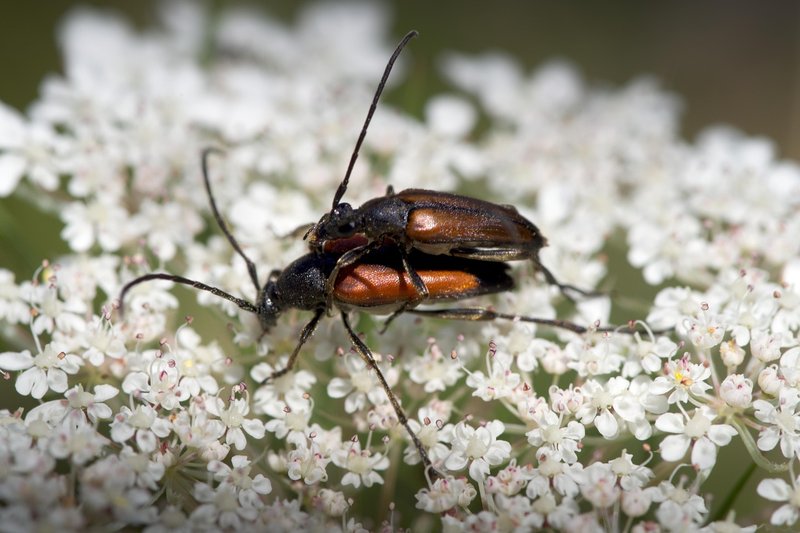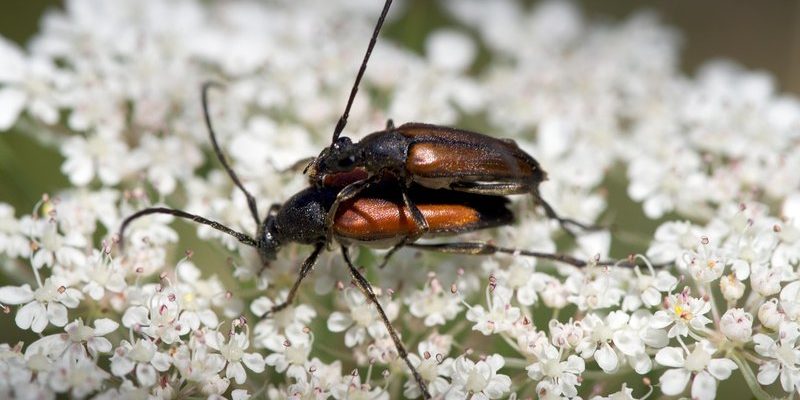
In this article, we’re diving into the intriguing world of beetles and uncovering ten surprising facts you might not know. Whether you’re a budding entomologist or just curious about the little critters you see outside, get ready to discover some cool and unexpected insights about these hard-working insects!
1. Beetles Are Super Old
Beetles have been around for a really long time—some estimates say they’ve existed for around 300 million years! That means they were around when dinosaurs walked the Earth. Talk about longevity! Their hard shells and adaptability have allowed them to survive various mass extinctions.
Imagine being able to weather the storm of time while so many other species vanished. That’s the magic of beetles. They’ve evolved and adapted to fit into nearly every environment on the planet, from lush rainforests to arid deserts. Beetles found their niche and stuck with it, proving just how resilient life can be.
2. They Come in All Shapes and Sizes
When you think of a beetle, you might imagine the common ladybug or a flashy scarab. But here’s the thing: they can vary widely in shape and size! Beetles can be as tiny as a grain of rice or as large as a dinner plate. The Goliath beetle, for example, can weigh over 3 ounces and is famous for its impressive size and striking colors.
You might be wondering why they come in such a variety of shapes. The answer lies in their adaptations. Different shapes and sizes help beetles to avoid predators, find food, and reproduce. For instance, some beetles have elongated bodies that help them navigate through narrow spaces, while others are compact for hiding in tight spots.
3. They Have Incredible Strength
Beetles might be small, but many of them can lift weights many times their own body weight. The horned dung beetle is a champion in this respect, capable of pulling objects over 1,000 times its weight! That’s like a person lifting a car.
This strength isn’t just a party trick, either. It helps them in securing mates, moving food, and navigating through their habitats. Imagine being able to carry your entire backpack effortlessly while hiking—that’s what a beetle can do every day!
4. Beetles Have Unique Life Stages
Like butterflies, beetles go through different life stages. But instead of a caterpillar, a beetle’s life starts as an egg, then becomes a larva, then a pupa, and finally, an adult beetle. Each stage has its own unique adaptations.
For example, beetle larvae often look very different from their adult counterparts. They might be eating machines, growing rapidly to store energy for their metamorphosis. This stage is crucial; the larvae need to gather enough food to fuel their transformation into a flying beetle later. It’s nature’s way of preparing them for success!
5. They Can Be Pests
While beetles can be fascinating and beautiful, some species can also be pests. For instance, the Japanese beetle is notorious for damaging plants and crops. They feed in clusters, leaving unsightly holes in the foliage.
If you’ve ever seen your garden or flowerbeds wilting, it might be a sign that beetles are munching away. But here’s the good news: many natural solutions can help manage these pesky beetles without harsh chemicals. Think of using companion planting or natural predators, like birds or beneficial insects, to keep them in check.
6. Some Can Glow in the Dark
Have you ever heard of fireflies? Believe it or not, fireflies are actually a type of beetle! They can produce light through a chemical reaction in their bodies, which they use to attract mates or lure prey. It’s one of nature’s coolest tricks!
But not all glowing beetles are fireflies. Some species, like the click beetle, can also emit light. It’s a great reminder of how diverse beetles can be, with some shining bright while others are masters of camouflage.
7. Beetles Can Live in Water
Not all beetles stick to land! Some, like the water beetle, thrive in aquatic environments. These beetles often have streamlined bodies that help them swim efficiently. They can be found in ponds, lakes, and streams, playing important roles in local ecosystems.
You might see them diving beneath the surface to hunt for food or hiding among reeds and grasses. Their ability to live both in water and on land reflects the incredible adaptability of beetles. It’s like having a versatile skill set: they know how to make the most of their surroundings.
8. Beetles Play Important Roles in Ecosystems
Beetles are not just fascinating creatures; they’re also essential to our ecosystems. Many beetles help with soil health by breaking down organic matter, while others play key roles as pollinators. They contribute to nutrient cycling, which keeps our environment balanced.
By helping decompose dead plants and animals, beetles ensure nutrients return to the soil. Some beetles, like ladybugs, also control pest populations, making them natural allies for gardeners. Understanding their roles can change how we view these little insects, highlighting how interconnected all life is.
9. They Communicate in Unique Ways
Beetles have their own ways of saying “hello” or “stay away!” They communicate through chemical signals called pheromones, which can attract mates or warn others of danger. It’s like having a secret language that only beetles understand!
Some beetles also engage in physical displays to communicate. For instance, male beetles might fight to establish dominance over a territory or to attract a mate. Watching them interact can feel like observing a tiny drama unfold in the great theater of nature.
10. There’s Always More to Learn
Beetles are incredibly diverse, and scientists are still discovering new species. Each year, researchers uncover new beetles in various habitats worldwide. The more we learn, the more we appreciate how remarkable these creatures are!
If you’re ever out in nature, take a moment to observe the beetles around you. You might notice their colors, shapes, and behaviors that tell a story of survival, adaptation, and beauty. Learning about beetles not only enriches our understanding of nature but also reminds us of the little wonders all around us.
In the grand scheme of things, beetles may seem small and unassuming, but they play big roles in maintaining our planet’s health. So the next time you spot a beetle, remember all of the surprising facts behind these incredible insects. Each one is a piece of a larger puzzle, contributing to the rich tapestry of life on Earth!

